Finding your target audience can help your business grow faster and more efficiently. Why market to people who will never buy your products or services. Instead, focusing on a smaller, more specific audience will save you time and make you more money. Here’s how to research and understand your audience. Allowing you to market your company more effectively.
Table of Contents
What is a target audience?
Let’s first define what a target audience is. A target audience is a particular group of consumers that most closely fits who a business wants to sell to. These identified targets or recipients for a particular service or product will align with the ethos of the business. They will be those customers that need or want the goods or services. This group can be marketed at effectively for the company’s offering. A target audience could consist of one very specific group or a company may have several different audiences. This could be depending on different products, price points or benefits offered. There are many names for a target audience such as target marketing, buyer persona, customer persona or ideal customer. They all mean the same thing; they are the consumers that will most benefit from your company’s goods or services.
How to find your target audience
You cannot assume or guess your target audience. You need to make a conscious decision to research and evaluate who you need to target. If you make assumptions about your customers’ personas, you will not get the full picture. By ensuring your audience is accurately created, you will not waste time or money on campaigns that focus on the wrong people. A customer persona will help you decide on many things including how to write copy, what social platforms to use, what adverts to place and everything you could consider for your marketing and brand strategy. Here’s how:
Understanding Your Business
Firstly, to begin researching your audience, you must understand your own business’ niche and industry. This may be the most basic start to audience research but it’s a vital step. Here are some of the things to consider.
- Is your company for business to business or business to consumer? Is your work corporate, technical or universal?
- What problem or desire does your service or product solve/provide?
- What are the benefits of purchasing your goods/services?
- Where does your business fit within its industry? Is it a high-end or bargain bin?
Consequently, by understanding and building answers to these questions, you can begin the target audience process.
Keyword Research
While I will always encourage small businesses to work on an SEO strategy, keyword research is vital for all digital marketing. Keyword research can help you discover a lot about your target audience. By knowing what people are searching for you can tailor your content strategy and improve your website in line with their needs. The key phrase research can help you discover:
- What issues are people having related to similar goods and services?
- What descriptors do users search for when shopping for products?
- Are searchers looking for branded keywords for your company or competitors?
- How large or small is your potential audience? A well-known product will have more related searches than a more unusual product. Similarly, a high-end product will usually have less interest than more affordable options. Think ‘fridge freezer’ compared to an ‘Industrial pressure gauge for food manufacturer’.
Competitor Research
Competitor analysis is another vital part of any marketing strategy. In the context of target audience research, reviewing your competitors can highlight new audiences or help you define your existing user base. Competitor audience research can encompass:
- Who interacts with and is engaged with their social media posts or other online forums?
- What does their content marketing strategy look like? Are they consistently blogging, do they provide extra resources and information on their website, and are they frequently updating on specific social platforms?
- Are they focused on SEO, PPC campaigns or both? If so, what keywords and phrases do they rank/show for?
Social Media
Social media continues to be an important source of brand awareness and customer traffic. Reviewing your social channels, competitors’ platforms as well as how your ideal client interacts online can help you discover where to engage them and how to go about it. Here are some things to consider when discovering your target audience on social platforms.
- What platforms are they present on and which are they actively using?
- How do they interact on social media? Are they passively engaged, actively engaged or use social media for a specific reason like staying in contact with friends or gaining news?
- How do they like to consume content? Are they readers, watchers or listeners? This can help you decide on campaign formats.
Interviews and existing customers
A more active form of target audience research is to engage customers directly. This can be with existing clients or with interviews with the public. Depending on your company set-up and the type of customer, you can get a different set of info. Reviewing existing customers can take the form of talking to them informally, collating a database of specific information about your clients or asking them to fill in surveys about themselves. As long as you are complying with GDPR and other data protection laws, you can use this information internally to develop a strategy.
Potential customer interviews, on the other hand, can be more difficult to gain but worth it to explore new audiences. You can employ a company to provide this service or find an audience. However, you can also do this research yourself. In customer persona interviews, you need to focus on long, rich answers rather than a one-word ‘yes’ or a short sentence. The more detailed the responses the better your understanding of pain points and goals. Ensure you track your results to allow you to review the information later.
Resources
Creating a buyer persona
Now we’ve done research on our target audience and have a better idea of who the right people are, we can dig a little deeper. Bringing all of our research together we can create a physical buyer persona. This document can help you outline everything you know about your perfect customer. A buyer (customer) persona is a snapshot of the type of customer you can expect to sell to.
Some companies will have one succinct buyer persona as their offering is very narrow and specific. Other businesses may have several personas. It all depends on the different products and services offered, differing issues or requirements across the consumer base and the different stages of the buying process the lead may be on. Each buyer persona should cover all these aspects and you should create one for every major difference you need to focus on. Here’s a breakdown of the different parts of common customer persona documents.
Demographics Information
The main part of the document is creating an ‘individual’ customer that you can create your ideas around. I often advise people to use a photo or graphic to represent the person and give them a name. This, in particular, can help you define different personas and keep them clear in your mind. You should then build key demographic information around your research. This frequently includes these areas:
- Age
- Gender
- Marital Status
- Number and Age of Children
- Location
- Employment Status
- Occupation/Industry
- Job Title
- Size of usiness/household
- Role in the purchasing process
- Annual Income
- Level of Education
- Hobbies & Interests
You can include any other information you think is relevant to a customers mindset, purchasing power or decision making abilities.
Sources of information
Another consideration is how clients and consumers can be influenced. This is part of your social research as well as how users interact with competitors and the niche as a whole. By understanding users’ influences, you can deliver a marketing strategy that is focused on the right subjects but also in the right places. You may add to your buyer persona these parts of information.
- Books & Magazines
- Blogs/Websites
- Social Media
- News Outlets
- Community & Events
- Gurus, celebrities, heroes
Goals, Values and challenges
Probably the most important part of your buyer persona is understanding your potential customer’s needs and desires. Not to mention how you can fix or provide them. Considering the goals, pain points and challenges of your consumer will help you produce information that will aid users rather than hinder them. Consider each of these areas when creating your customer persona document.
Goals
What does your customer want to achieve? If you’re a B2C business, this may seem fairly clear cut if they are buying a product. But, consider why they are looking for this product. Is it to make life easier, to look good, a gift? This is the true goal rather than the purchase. B2B conversely may seem more complicated but frequently falls into a few key categories. Improving time management, reducing costs or reaching new audiences.
Values
What does your target client value most? Is it something practical such as next day delivery, or is it a more principled basis, perhaps valuing environmental concerns highly in a business? By knowing their values, you can deliver a message that builds trust not to mention matches their ethos as a consumer.
Challenges
What is the main challenge they are finding? This could be the thing that has influenced their goals. It could be the specific challenges they face in their home or work life that means they are looking for a solution.
Pain points
This is similar to challenges but it’s the main issues that are either contributing to the challenging situation or the roadblocks for finding a solution. A pain point could be:
- Not being able to utilise a website effectively.
- Being unable to find a product in a specific configuration.
- Their own lack of time or expertise.
Objections to Sale
Objections to sale should be considered as well. This will ensure your sales process is super smooth and has limited friction. Objections could include:
- Price points
- Not enough information to make a decision
- Not the right specification
- Delivery or deployment not fast enough
- Need to discuss with another stakeholder or advisor
- Not the decision-maker
- Lack of trust
You can use all of this information to build a clear picture of your customer and a clear roadmap of how to improve your marketing, offering and customer service.
Strategising with your Personas
Now that you have created your buyer persona, it’s time to put your knowledge into action. For each stage of your customer’s journey, you can create content to aid it. This includes brand awareness, boosting traffic, convincing them to buy as well as maintaining the relationship through after-sales support and information.
You can build a comprehensive content marketing strategy for every step with the help of a sales funnel. Our guide on a Content Marketing Strategy using Funnels will help you develop the right content, for the right people, at the right time.
If you would rather someone else handle the details, or you don’t have the time, get in touch with me. I can help strategise and implement a content marketing strategy that works specifically for your business and buyers. Let’s talk and see how we can grow your business together.

